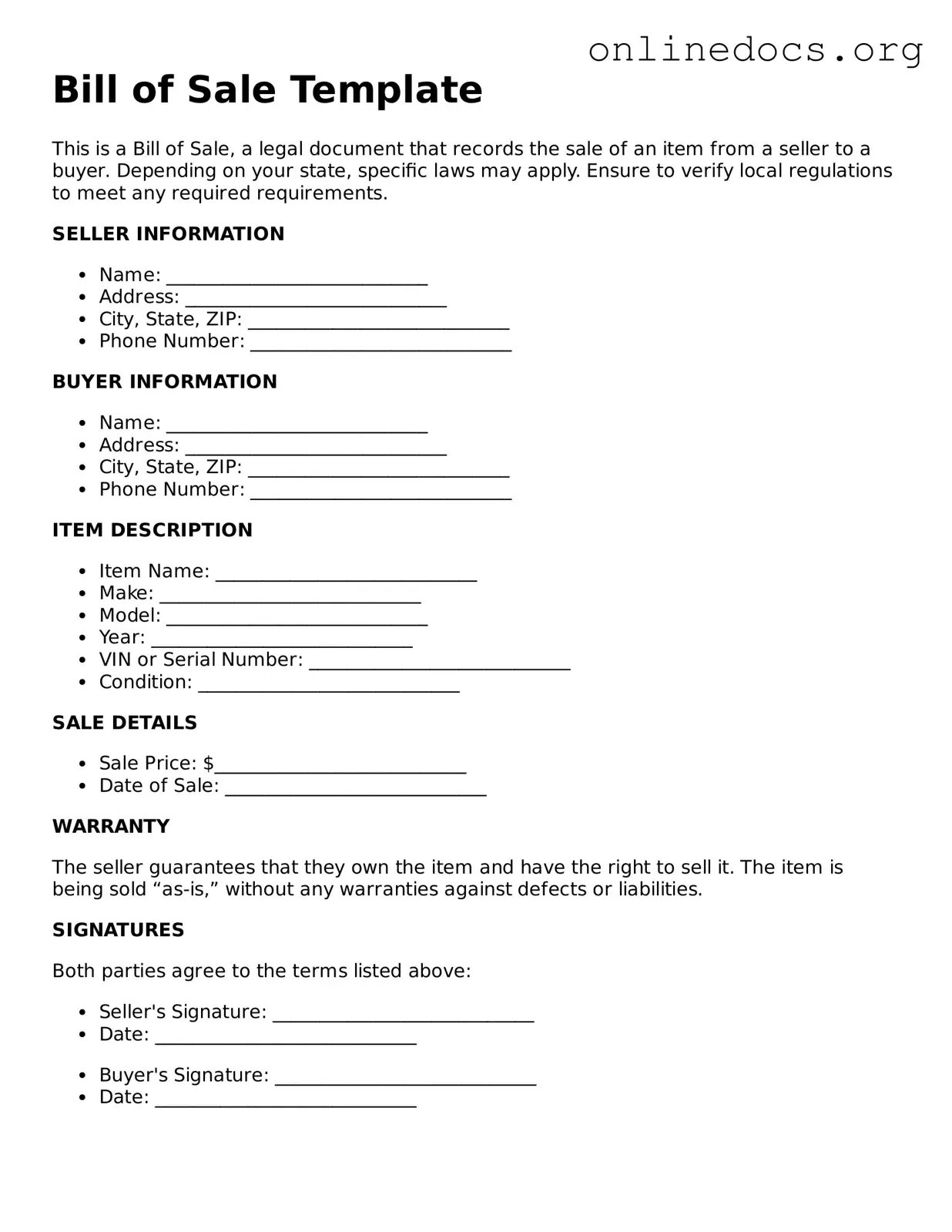A purchase agreement is a document that outlines the terms of a sale between a buyer and a seller. Like a Bill of Sale, it serves as proof of the transaction. It details the items being sold, the sale price, and any conditions of the sale. Both documents require the signatures of the parties involved, establishing mutual consent. However, a purchase agreement often includes more comprehensive terms, such as payment methods and contingencies, while a Bill of Sale is typically more straightforward and focused solely on the transfer of ownership.
A lease agreement is another document that shares similarities with a Bill of Sale. It outlines the terms under which one party can use property owned by another party for a specified period. While a Bill of Sale transfers ownership, a lease agreement allows for temporary possession. Both documents require signatures and can include terms related to payment and responsibilities. However, a lease agreement is more complex, often detailing maintenance obligations and renewal options.
A title transfer document is crucial when transferring ownership of vehicles or real estate. This document serves to officially change the title from one owner to another, similar to how a Bill of Sale indicates the sale of an item. Both documents provide proof of the transaction and require signatures from both parties. However, a title transfer document is often required by state law for vehicles and real estate, making it more formal than a typical Bill of Sale.
An invoice is another document that resembles a Bill of Sale, as it provides a record of a transaction. An invoice lists the items sold, prices, and payment terms, serving as a request for payment. Both documents can be used for record-keeping and may include similar details about the transaction. However, an invoice does not transfer ownership; it simply indicates that payment is due, while a Bill of Sale confirms that ownership has been transferred.
When engaging in the sale of an all-terrain vehicle, it's essential to have the proper documentation to ensure a smooth transaction. One such important form is the All Templates PDF, which can help facilitate the ownership transfer process between the buyer and seller, protecting the interests of both parties involved.
A receipt is a document that acknowledges payment for goods or services. It is similar to a Bill of Sale in that it serves as proof of a transaction. Both documents include details about what was sold and the amount paid. However, a receipt typically focuses on the payment aspect, while a Bill of Sale emphasizes the transfer of ownership. Receipts are often issued after payment, whereas a Bill of Sale can be created at the time of the transaction.
A warranty deed is used in real estate transactions to convey property ownership. Like a Bill of Sale, it provides proof of ownership transfer. Both documents require signatures and can include information about the property being sold. However, a warranty deed includes guarantees about the title's validity and the seller's right to sell, making it a more formal and legally binding document than a standard Bill of Sale.
